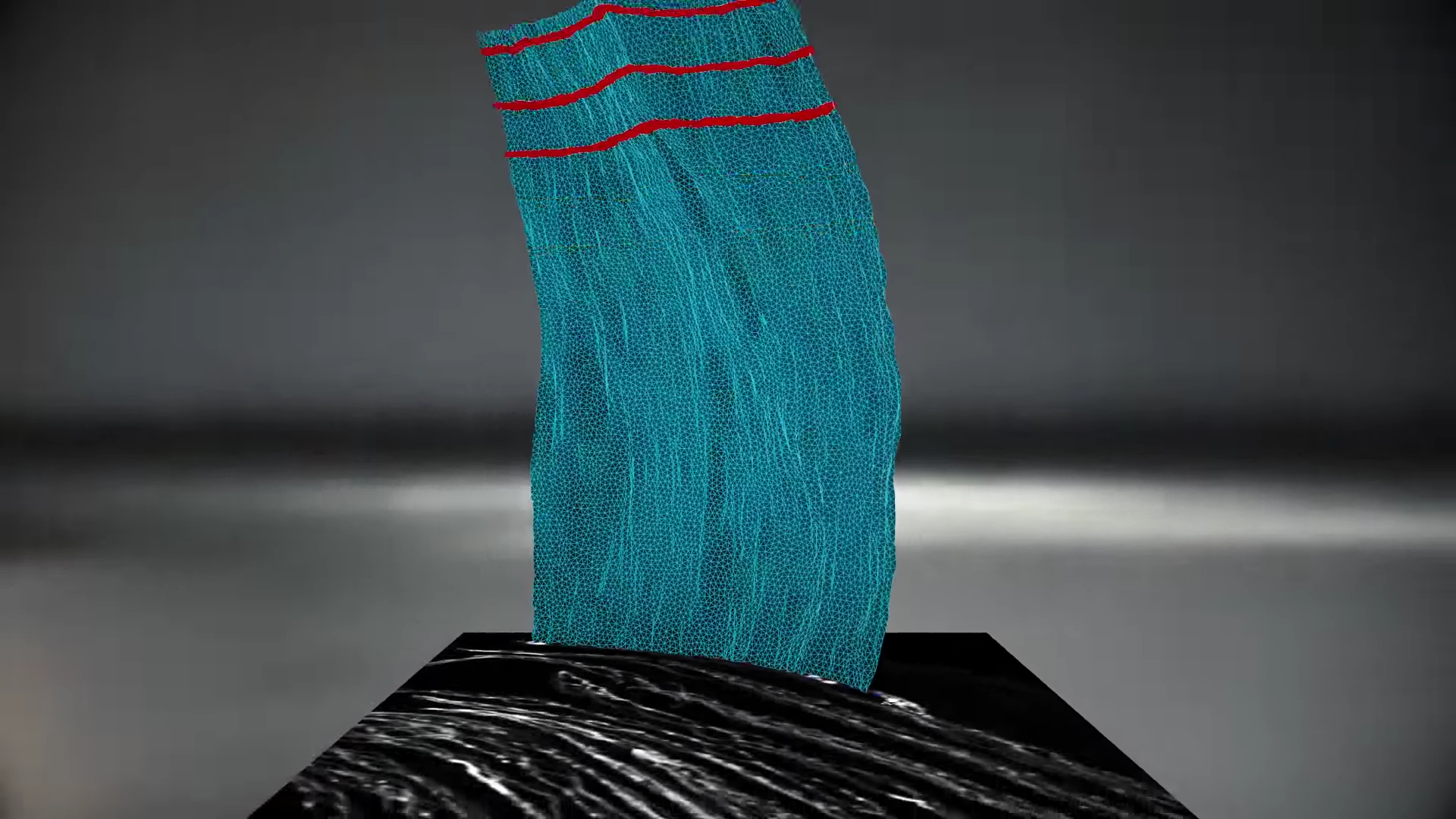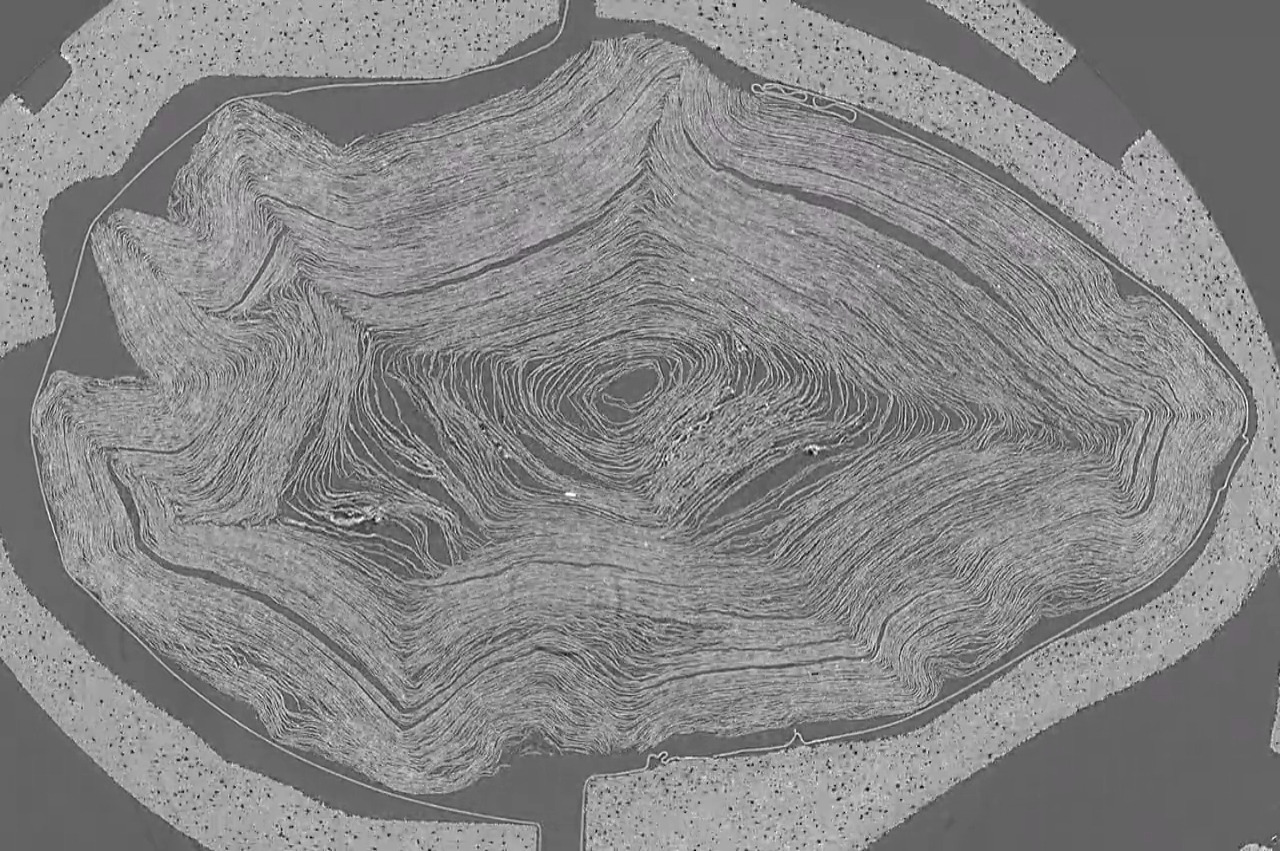[ad_1]
You hear that? That is the sound of individuals all over the place saying ‘they’ll do this?’ after studying how researchers used imaging, laptop imaginative and prescient, and machine studying to learn historic Roman textual content inside what most would assume quantities to little greater than a stick of charcoal by it.
The 2000-year-old scroll is certainly one of greater than 800 found within the ruins of Herculaneum, a Roman metropolis buried by the eruption of Mount Vesuvius in AD 79. Carbonised by the eruption, every scroll is extremely fragile, and any try and open one as much as see if it is in any method legible has led to a crumbling mess. But researchers have been eager to unlock the secrets and techniques saved in these scrolls, and it seems like machine studying might need confirmed the important thing to doing so.
Firstly, the scroll learn by researchers was unwrapped, just about. This advanced course of entails scanning the scroll, which befell at a particle accelerator close to Oxford, UK. Then, these crumpled layers have been unfurled into what quantities to flat layers of papyrus—nonetheless just about, in fact.
“The X-ray photographs are became a 3D quantity of voxels utilizing tomographic reconstruction algorithms, leading to a stack of slice pictures,” the Vesuvius Problem webpage says.
Then a step referred to as Ink Detection was carried out on the unfurled layers, and this makes use of a machine studying mannequin to determine the inked areas of the papyrus.
Numerous groups of researchers have then been making an attempt to extract textual content from the scrolls as part of one thing referred to as the Vesuvius Problem. Every staff used varied strategies, fashions, and enhancements to the beforehand developed strategies to attempt to uncover extra of what these scrolls are hiding. Every staff then had till midnight on January 1, 2024 to submit their outcomes to enter the problem earlier than a staff of “eminent papyrologists” reviewed every entry to confirm the outcomes. The successful staff received $700,000.
The successful staff—comprised of Youssef Nader, Luke Farritor, and Julian Schillinger—entered a submission that was deemed by all of the judges as being essentially the most readable of the lot. Here is how they did it, based on a non-eminent, non-papyrologist (me).

The staff’s method constructed on a earlier discovery of a crackle sample, which was found by Casey Handmer final 12 months. This was later developed on by Luke Farritor, who used a GTX 1070 as part of his more moderen prize-winning efforts. Different groups of researchers, together with one other member of the successful staff, Youssef Nader, had additionally constructed wonderful machine studying fashions for detecting ink utilizing fragments of the scrolls that had fallen off, although these solely appeared to work effectively on fragments, not rolled up papyrus.
The successful staff used the mixed information of those approaches to supply the clearest outcomes with the rolled up scroll stays.

“The submission incorporates outcomes from three totally different mannequin architectures, every supporting the findings of the others, with the strongest pictures typically coming from a TimeSformer-based mannequin… Along with unparalleled ink detection, the successful submission contained the strongest auto-segmentation method we’ve got seen thus far.”
Round 5% of the primary scroll has now been learn because of all of the work from all of the groups of researchers engaged on this crumbly topic. And that is why the 2024 Vesuvius Problem Grand Prize has now been introduced, with the formidable goal of going from the 5% now identified as much as 90% of all 4 scrolls which have been scanned.
So, there’s undoubtedly work to be performed to know extra of it, however even right now the researchers have some thought of what it says: “as too within the case of meals, we don’t straight away consider issues which might be scarce to be completely extra nice than these that are plentiful.”
Yep, it is all concerning the pleasures of life, or what’s referred to as Epicureanism. Specifically, for this part a minimum of, the pleasures of stuffing your face.
[ad_2]
Source link


